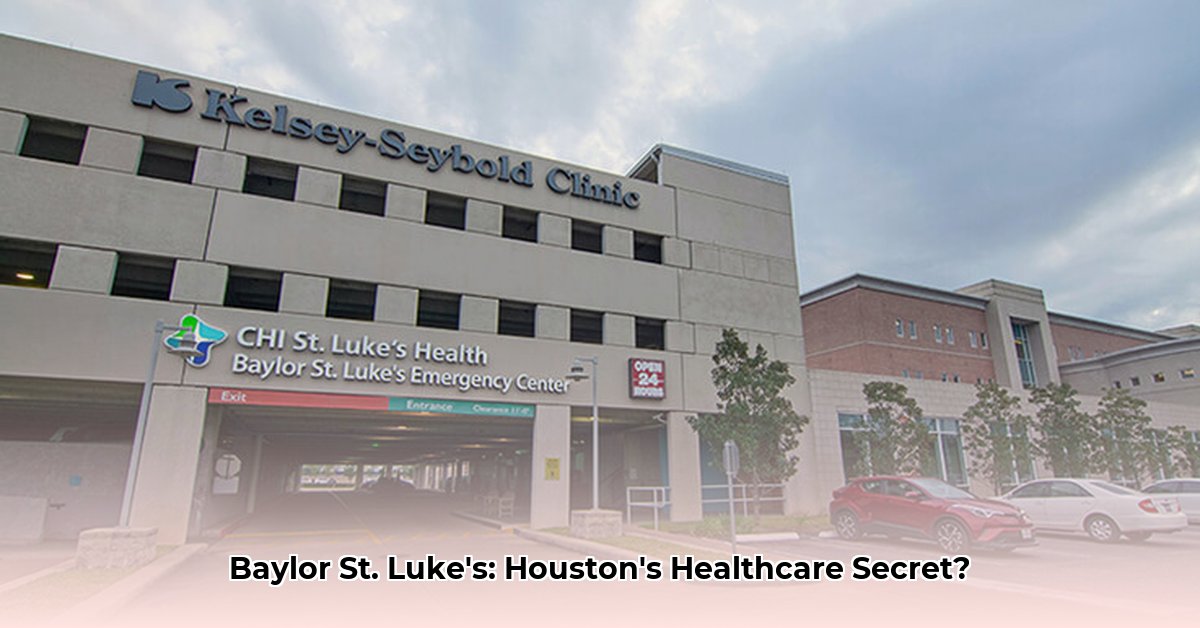
Baylor St. Luke's Medical Center (BSLMC), located at 6720 Bertner Street in Houston, Texas, represents a leading example of integrated healthcare excellence. This case study examines BSLMC's achievements, challenges, and future prospects, highlighting its unique collaboration with Baylor College of Medicine (BCM) and its impact on patient care and medical innovation.
Clinical Excellence: A Foundation of High-Quality Care
BSLMC's commitment to clinical excellence is evident in its numerous accolades, most notably its Magnet® recognition for nursing excellence. This prestigious designation signifies a sustained commitment to superior nursing care, advanced technology, and a supportive work environment for nursing staff. The hospital's dedication extends across various specialties, including cardiovascular care, neurology, oncology, and organ transplantation. While specific quantitative data regarding patient outcomes requires further research, BSLMC's reputation for superior care consistently attracts leading medical professionals. How does BSLMC maintain this consistently high level of quality? The answer lies in their ongoing investment in advanced medical equipment, continuous staff training utilizing the latest techniques, and substantial investment in research initiatives. This continuous cycle of improvement makes BSLMC a leader in clinical care.
Research and Innovation: A Collaborative Engine for Progress
The synergistic partnership between BSLMC and BCM fuels a robust research environment, fostering a dynamic exchange between clinical practice and scientific discovery. This collaboration translates to accelerated advancements in treatment modalities and improved patient outcomes. While detailed quantitative data on research publications and successful clinical trials is needed for a complete analysis, the scale of this collaboration strongly suggests a considerable impact on medical innovation. This ongoing partnership ensures that cutting-edge research translates directly into improved patient care, creating a virtuous cycle of progress. The question remains, how can the remarkable research being conducted translate into more widely accessible treatments and improved outcomes for patients across all communities?
The Integrated Healthcare Model: Synergy and its Challenges
BSLMC's integrated model with BCM represents a powerful approach to healthcare delivery. This collaboration ensures seamless information flow and resource sharing, enabling rapid translation of research findings into clinical practice. This integrated structure streamlines patient care, accelerates innovation, and enhances educational opportunities for healthcare professionals. While this model demonstrates considerable success, optimizing interdepartmental communication and resource allocation remains an area for ongoing improvement within any large, complex organization. The ultimate question is: how can this successful model be replicated and scaled to improve access to high-quality care across a wider population?
Challenges and Opportunities: Navigating the Future of Healthcare
BSLMC, like many leading medical centers, faces ongoing challenges. Balancing financial sustainability with equitable access to high-quality care for all members of the community presents a constant challenge. Addressing these concerns requires a comprehensive approach that includes optimizing operational efficiencies, exploring diverse funding models, and expanding outreach to underserved populations. The complex interplay of financial constraints, workforce shortages, and regulatory factors necessitates a proactive and adaptable approach to these challenges.
Actionable Insights and Recommendations: A Path Forward
To sustain its position at the forefront of healthcare, BSLMC must address key areas through strategic initiatives targeting several stakeholder groups.
Actionable Steps to Enhance BSLMC's Impact
Enhance Data Analytics: Implement sophisticated data-tracking and reporting systems (1-year goal: improved data-driven decision-making; 3-year goal: predictive modeling for resource allocation).
Strategic Planning for Sustainability and Access: Develop a comprehensive strategic plan focused on financial sustainability and equitable access to care (1-year goal: draft of plan's major components; 3-year goal: full implementation and measurable results).
Strengthen BCM Research Alliances: Forge stronger research partnerships with BCM, fostering increased collaboration and shared resources (1-year goal: expand joint research projects; 3-year goal: establish a joint center for research innovation).
Improve Patient and Family Communications: Enhance transparent communication and improve patient engagement in care plans and treatment options (1-year goal: implementation of a revamped communication strategy; 3-year goal: demonstrably improved patient satisfaction scores).
Expand Community Outreach: Expand outreach programs to underserved communities, targeting populations with barriers to accessing care (1-year goal: launch pilot programs in underserved communities; 3-year goal: measurable expansion of services into target populations).
Value-Based Care Contracts: Negotiate value-based care contracts with payers, rewarding quality over volume (1-year goal: secure contracts with at least two major payers; 3-year goal: transition at least 50% of contracts to value-based care).
Support for Research and Community Health: Secure funding from government agencies for research and community health initiatives (1-year goal: submit grant applications totaling 10 million dollars; 3-year goal: secure at least 5 million dollars in grants).
Conclusion: A Model for the Future of Healthcare
Baylor St. Luke's Medical Center serves as a powerful illustration of the potential for integrated healthcare models to drive both clinical excellence and groundbreaking research. While challenges remain in ensuring equitable access to this high-quality care, BSLMC's commitment to innovation and community engagement offers a compelling model for the future of healthcare. Through strategic planning and collaborative efforts, BSLMC is well-positioned to overcome these challenges and maintain its leading role in advancing health outcomes.